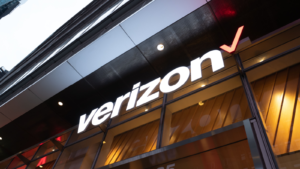This article delves into the strategic prowess of three high-dividend stocks, each representing a distinct sector. This analysis unveils key insights from the first one’s adept handling of coal market fluctuations to the second one’s robust fiber expansion strategy and the third one’s remarkable growth in broadband.
In terms of dividends, the first one offers a forward dividend yield of 13.61%. Meanwhile, the second one is attached with a forward yield of 6.43%. Lastly, the third one provides a forward yield of 6.33%.
Read the article to explore these companies’ performances, discover how they navigate challenges, leverage technological advancements, and position themselves for sustained success. It reveals the intricacies of their strategies and market adaptations. These high-dividend stocks are vital in constructing a secure and prosperous portfolio.
Alliance Resource Partners (ARLP)

Alliance Resource Partners’ (NASDAQ:ARLP) performance in coal sales is a key fundamental breeding ground for value growth. The company maintained a stable pricing structure despite a 10.7% decrease in total coal sales price per ton, which was $60.60 for 2023 Q4. The decrease can be attributed to temporary issues like softer demand in both domestic and international markets. This is influenced by a mild start to winter and lower natural gas prices. However, this impact was partially offset by the positive effects of the well-contracted order book.
Additionally, the sequential decrease in coal sales price per ton by 6.7% indicates Alliance Resource Partners’ responsiveness to market conditions. The company’s ability to adjust pricing to softer demand showcases a strategic pricing model considering both short-term market variations and long-term contract commitments.
The decline in coal sales volumes by 7.5% to 8.6 million tons in the 2023 quarter reflects the challenges faced, particularly in the Appalachia region. Factors such as lower recoveries, reduced operating units at MC Mining, and geologic conditions at the Mettiki longwall operation contributed to reduced volumes.
Despite these challenges, The notable year-over-year increase in coal royalty revenue per ton by 24.3% suggests the lead of Alliance Resource Partners’ coal royalty business. Thus, the company can optimize revenue generation from coal royalties, even in the face of lower overall revenues for Q4.
Finally, the increase in full-year revenues from $2.4 billion (2022) to $2.6 billion (2023) demonstrates the company’s capability to navigate external pressures, including high interest rates, geopolitical unrest, and volatility in commodity prices. A key factor contributing to Alliance Resource Partners’ revenue growth is the well-contracted order book. Hence, securing a robust order book is vital to providing a stable foundation for the company’s top line.
AT&T (T)

AT&T’s (NYSE:T) focus on fiber expansion is a vital edge of its growth strategy. Fundamentally, this is positioning the company to capitalize on the demand for high-speed internet services. The addition of 1.1 million AT&T fiber net additions in the most recent year is a substantial achievement. This marks the sixth consecutive year, surpassing the one million net additions mark. This reflects a growing customer base. Also, it indicates a sustained trend, suggesting that AT&T’s fiber offerings are attracting new customers and retaining them over time.
Furthermore, AT&T’s fiber subscribers have grown from 3.4 million to over 8.3 million in the past three years, highlighting the scalability and appeal of fiber-based services. This is not a one-time surge but a continuous upward trajectory, indicating that AT&T’s fiber strategy is not just a momentary trend but a sustained success story.
From a strategic standpoint, the financial benefits derived from this fiber focus are vital. The doubling of fiber revenues to over $6.2 billion (2023 against 2020) signifies top-line growth with a positive margin impact. The broadband average revenue per user (ARPU) climbing by more than 20% indicates customers seeking higher-value plans with faster speeds. Hence, this is aligned with the industry trend towards more robust connectivity solutions.
Finally, using AI-driven efficiencies to derive a significant leg of cost savings is a strategic move. AT&T progresses towards achieving its incremental $2 billion-plus run-rate savings target by mid-2026. Hence, in this progress, AI integration is streamlining operations with cost-effectiveness.
Verizon (VZ)

Verizon’s (NYSE:VZ) broadband segment has shown remarkable growth. In 2023, there were over 1.7 million broadband net adds. Also, the notable increase in fixed wireless access (FWA) subscribers contributes over 1.5 million net adds. This is reflecting Verizon’s lead in high-quality broadband services. The consistent adding more than 350K FWA subscribers per quarter suggests a steady and sustainable growth strategy.
Within three years of launching FWA, Verizon has already served more than 3 million fixed wireless access customers. The company may surpass its goal of 4 million to 5 million subscribers by the end of 2025. The strong adoption of FWA, especially in C-Band markets, represents the product’s reliability and speed, leading to a very strong Net Promoter Score.
Fios, another component of Verizon’s broadband offering, experienced a net addition of 55K subscribers, demonstrating consistent growth and retention. The lead in Fios is attributed to the quality and overall value of the product. These developments position Verizon for continued broadband subscriber momentum into 2024.
On the other hand, Verizon’s strategic focus on private networks and 5G business solutions contributes significantly to its growth. There is growing interest from large enterprises, including partnerships with Norfolk International Terminal, Audi, and Nucor (NYSE:NUE). Hence, this indicates Verizon’s edge in providing tailored solutions for complex logistics and operations in ports, automotive, and heavy industries.
Lastly, 5G private network partnerships with the NFL are expanding, which enhances spectator and retail experiences. This showcases Verizon’s ability to leverage its network capabilities for diverse applications. Therefore, deploying C-Band and millimeter wave technologies further differentiates Verizon, leading to high-density performance in urban areas and public event spaces.
As of this writing, Yiannis Zourmpanos held long positions in T and VZ. The opinions expressed in this article are those of the writer, subject to the InvestorPlace.com Publishing Guidelines.
Yiannis Zourmpanos is the founder of Yiazou Capital Research, a stock-market research platform designed to elevate the due diligence process through in-depth business analysis.
